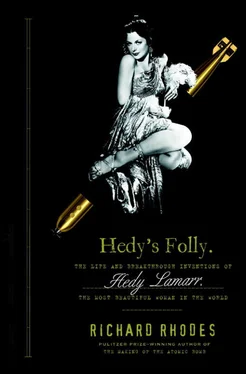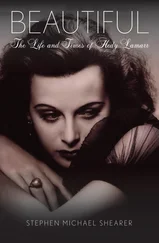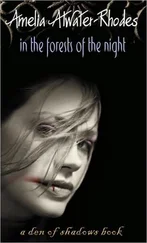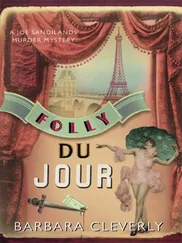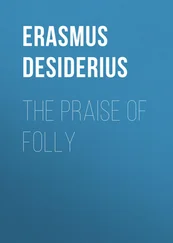The piano rolls cut by hand following sheet music notations reproduced music purely mechanically; they did not program changes in tempo or dynamics. Player-piano operators had to adjust these qualities in real time, pumping more or less vigorously and manipulating a tempo lever. Some piano rolls featured a printed expression line that wavered up or down as the roll turned to direct the player’s adjustments. These adaptations distracted from listening and still failed to reproduce an authentic professional performance. To improve the quality of recordings, manufacturers developed reproducing pianos with electric motors to drive the pneumatics, up to sixteen dynamic levels between soft and loud, and multitrack piano rolls that could register and generate the variations. It then became possible for a pianist or composer to record a musical work with some confidence that its player-piano reproduction would approximate his performance.
Pleyel had contacted Stravinsky in 1921 to propose that he transcribe his works for the Pleyela reproducing piano. The company offered him the use of a suite of rooms in its building in Paris and technical support. He quickly decided to accept the offer, he wrote, for two reasons:
In order to prevent the distortion of my compositions by future interpreters, I had always been anxious to find a means of imposing some restriction on the notorious liberty… which prevents the public from obtaining a correct idea of the author’s intentions. This possibility was now afforded by the rolls of the mechanical piano….
There was a second direction in which this work gave me satisfaction. This was not simply the reduction of an orchestral work to the limitations of a piano of seven octaves. It was the process of adaptation to an instrument which had, on the one hand, unlimited possibilities of precision, velocity, and polyphony, but which, on the other hand, constantly presented serious difficulties in establishing dynamic relationships. These tasks developed and exercised my imagination.
After the Les noces premiere, Antheil recalled, “the next day we went to see him at Pleyel’s… and Stravinsky himself played Les noces , this time on an electric pianola. I liked the second version even better than the one which we had heard last night; it was more precise, colder, harder, more typical of that which I myself wanted out of music during this period of my life.” He told Stravinsky it was wonderful. Boski concurred.
A day or two later, abruptly, Stravinsky dropped him, refused his calls, made no answer to an inquiring letter. Antheil learned from a mutual friend that the composer had taken umbrage over reports that Antheil had claimed they were close friends, that Stravinsky admired his music, and that the two had spent all their time together in Berlin. “Months later I encountered him at a concert,” Antheil writes ruefully, “but his steely monocle bored straight through me.” The two friends did not reconnect for more than a decade.
The incident depressed Antheil “tremendously,” he recalled. “It haunted my dreams for many years.” No doubt it did, but Boski believed it also released him from his hero worship of the older man. “I’m happy about it!” she told him. “You liked Stravinsky’s music too much.” Stravinsky’s abrupt rejection motivated Antheil to compete with his former hero—“for where,” he writes, “is the younger man who does not revolt against his elders?” And, a little later, speaking as if for his whole generation: “We are done with [Erik] Satie, Les Six, Stravinsky, and the Dadaists. Even though we recognize the value of the innovations brought about by these men in our imbecilic age, we want nothing to do with them.”
As one mentor pulled away, another almost immediately stepped forward. The American poet Ezra Pound, introduced to Antheil by a mutual friend, “turned up… in a green coat with blue square buttons; and his red pointed goatee and kinky red hair above flew off his face in all directions. Boski looked at him, not a little astonished.” Antheil played several hours’ worth of his compositions for the Pennsylvania expatriate and shared his theories of the future of music, after which Pound decided to write a short, flamboyant book about the man, Antheil and the Treatise on Harmony .
While working on his book, Pound moved to promote his latest protégée, who happened also to be his mistress, the American violinist Olga Rudge. “A dark, pretty, Irish-looking girl,” Antheil recalled her, twenty-eight years old in 1923, “and, as I discovered when we commenced playing a Mozart sonata together, a consummate violinist.” Pound wanted to arrange a concert for Rudge and Antheil. “At this concert, he explained, he would take care to see that all of important Paris was present, the really important Paris that mattered.” To that end, he wanted his friend to compose for Rudge not one but two violin sonatas.
Antheil’s solution to the problem of composing two violin sonatas in a matter of months—it was the end of July, and the concert would be scheduled for November—was to swoop Boski up and take her off to Tunis, on the north coast of Africa opposite Sicily. They both liked the fierce heat of North African summer. They remained in Tunis for a month, listening to Arabic music that Antheil copied down with his phonographic ear while writing not a note of his own.
Because he was vacationing in Tunis that August, Antheil was not in Paris when two sometime American filmmakers, Man Ray and Dudley Murphy, began shooting clips for an art film. Murphy had seen Man Ray’s work at a Dada theater gathering, Le coeur à barbe ( The Bearded Heart ), on 6 July 1923. (Antheil may have attended as well; he left for Tunis later in July.) The event included premieres of compositions by Stravinsky, Satie, and Darius Milhaud; poems; a Tristan Tzara play (named for another heart, this one gas: Le coeur à gaz); and several short films, including Man Ray’s first, Le retour à la raison ( The Return to Reason ), a three-minute silent, semiabstract short. “All the celebrities of Paris,” the Little Review ’s publisher, Jane Heap, writes, “painters, sculptors, musicians, poets; foreigners of every title, and rich excitement-hunting Americans turned out for this ultra-modern show.” Fights broke out. “Canes clashed, mirrors and footlights smashed, the audience stamped and laughed and shouted.”
Some time after the Dada gathering, Dudley Murphy paid Man Ray a visit. “One day a tall young man appeared with his beautiful blond wife,” Man Ray recalled. “Dudley Murphy said some very flattering things about my work and suggested we do a film together.” Murphy was the son of a prominent Boston School painter, Hermann Dudley Murphy, who taught drawing at Harvard. Young Murphy’s parents had divorced when he was a teenager, and he had moved with his mother to Pasadena. He had grown up with the movie business at a time when Hollywood was still tolerant of experimental film work. He arrived in Paris in 1923 an accomplished director with one feature and numerous short art films to his credit.
Who precisely was responsible for the now-classic art film Ballet mécanique has been a subject of debate for more than eighty years. Murphy and Man Ray evidently contributed more mise-en-scène and footage than the French artist Fernand Léger, to whom the film is usually credited. What no one disputes is that Antheil signed on later in 1923 to write the film score and produced a score that was twice as long as the film and never cut or synced to fit. Boski’s recollection of the informality of the film’s production is probably as accurate as any. “Even though the idea of the film and music called Ballet mécanique was to be a joint conception of Léger, Dudley Murphy and George,” she writes, “it seems to me everyone, in their individual manner, went their own way. George got so enthused about composing the music that any synchronization between objects of the film and tone clusters and tempo of music must be considered purely coincidental. But this was nothing that bothered us in those days, things didn’t have to ‘fit’ as they do in commercial pictures, as long as essentially they had an esthetic connection.”
Читать дальше
